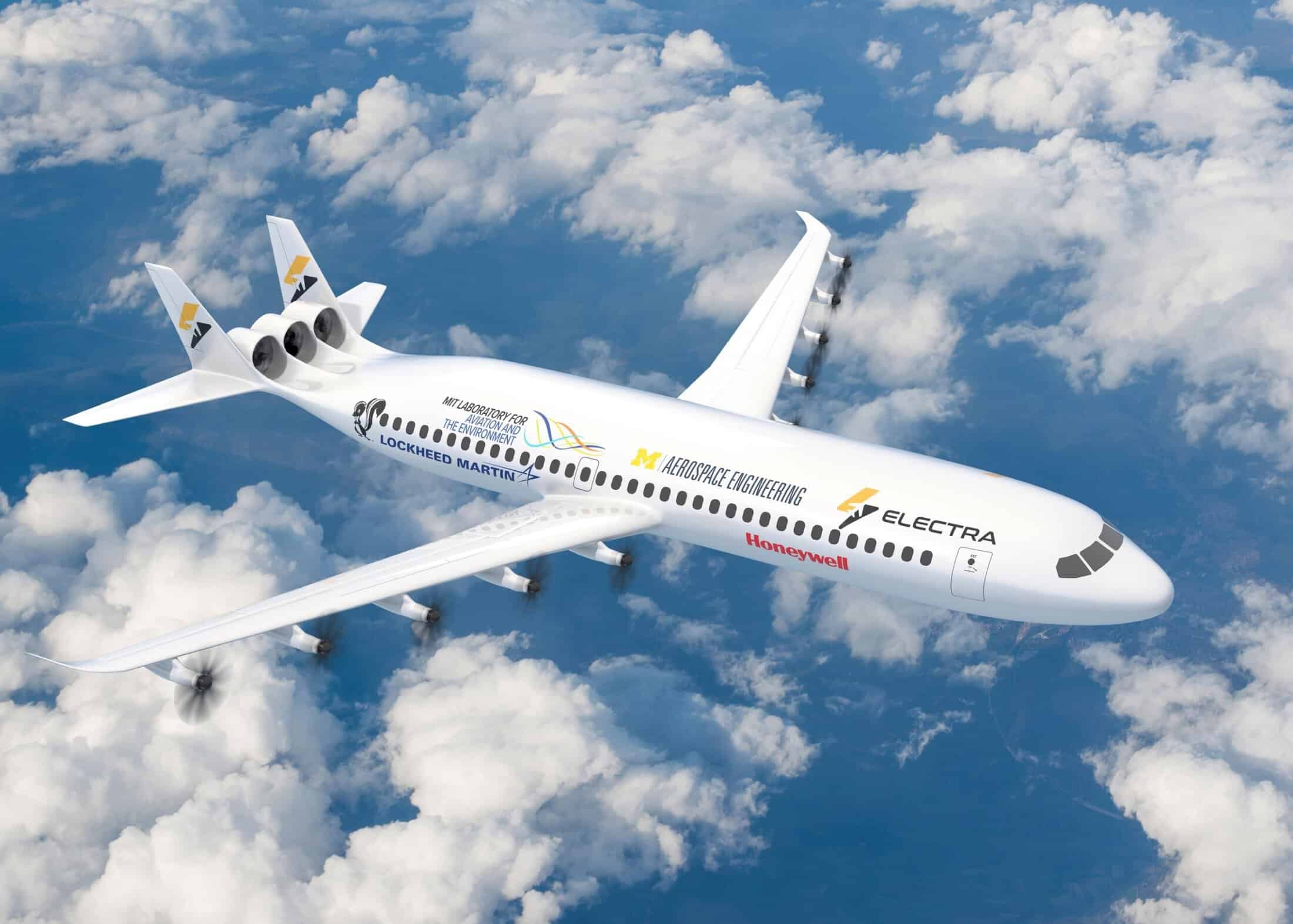
NASA AACES Initiative Calls on U-M and Electra.aero Partnership
NASA’s Advanced Aircraft Concepts for Environmental Sustainability (AACES) 2050 initiative aims to reduce carbon emissions

NASA’s Advanced Aircraft Concepts for Environmental Sustainability (AACES) 2050 initiative aims to reduce carbon emissions
Photo: Concept for a decarbonized commercial airliner that leverages Electra’s proprietary technology. (Credit: Electra)
Electra.aero, Inc. (Electra) has been awarded the first contract from NASA’s Advanced Aircraft Concepts for Environmental Sustainability (AACES) 2050 initiative. Under this initiative, NASA aims to establish U.S. leadership in decarbonizing aviation. The award will look to Electra to develop next-generation technologies for reduced carbon emissions in commercial airliners while working alongside industry and academic leaders which include the University of Michigan.
To do this, Electra will collaborate with a team of representatives from leading public and private institutions in aerospace, including American Airlines, Lockheed Martin Aeronautics, and the University of Michigan Department of Aerospace Engineering. This partnership team consists of U-M professors, Gokcin Cinar (U-M PI), Joaquim Martins (Co-PI), Max Li (Co-PI), Venkat Vishwanathan (Co-PI), and Carlos Cesnik (Advisory Board) and sprouted from the team’s long-standing relationship with Electra. The U-M team has continued collaborating with the company from the early idea generation stage all the way through final preparations and looks forward to further assisting with the initiatives development.
Founded in 2020 by John Langford, Electra has made significant advancements towards sustainable aviation by developing a 150-kW hybrid-electric propulsion system and testing it on the company’s two-passenger Ultra Short prototype aircraft. Electra is now working on a nine-passenger version of the aircraft for future passenger and cargo services and has secured orders from 52 airline customers.
Read the full news release here for more details.